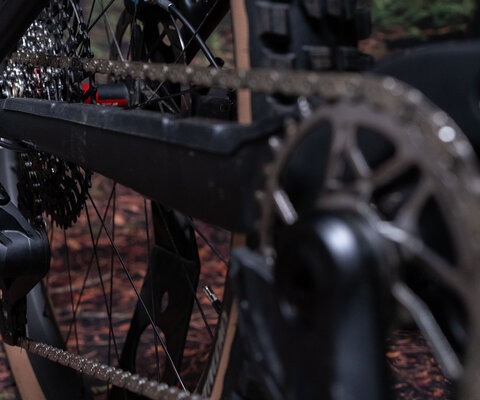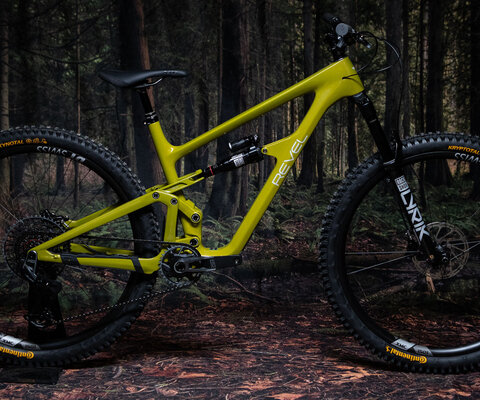
Specialized Levo 4 Alloy Comp Bike Review
Words and Photos by Cy Whitling
Big power, big responsibility.
Early in April Specialized launched the fourth generation of the Levo e-bike in a range of carbon builds, including a frame-only. Now though, the metal version of this full-power beast has arrived and it’s predictably a little heavier, a little more affordable, and otherwise pretty dang similar to the carbon one. It also comes in this pink, reminiscent of the Enduro’s launch colors, which I’m pretty dang fond of.
Specialized Levo 4 Alloy Details
- Travel: 150 mm (rear) 160 mm (front)
- Wheel Size: mixed 27.5/29”
- Size Tested: S4
- Build Tested: Comp
- Head Tube Angle: 64.5°
- Motor: Specialized 3.1
- Battery: 840 Wh
- Measured Weight: 54.1 lbs (24.53 kg)
- MSRP: $7,300
The Levo is Specialized’s version of a full-power do-it-all e-bike, that should be well-suited to a wide variety of trails and riding styles. That means it’s got plenty of options for adjustment and optimization that I’ll be digging into later.

Motor and Battery
The alloy Levo 4 uses the same 3.1 motor as the non-S-Works carbon Levo 4. It’s a Specialized-branded unit, made by Brose that delivers 101 Nm torque and 666 watts of peak power. It also uses the same 840 Wh battery as the carbon bike, and is compatible with the same smaller and lighter 600 Wh option, as well as the optional range extender. This system isn’t quite class-leading in terms of claimed stats, but it delivers a whole bunch of power, and a remarkable amount of torque in a very smooth, quiet, and natural fashion.
The Levo 4 Alloy also has the same high-res full-color top tube display as the carbon version. This screen is remarkable, bordering on the absurd. I vividly remember huddling in the back of the bus on the way to play high school sports, using a headphone splitter to share my buddy’s iPod Nano with three other guys so that we could all watch Ocean’s 11 on its tiny screen. Now there’s a similarly bright, similarly sharp screen inside my ride. What a world! Somebody needs to figure out how to install Doom on this thing.
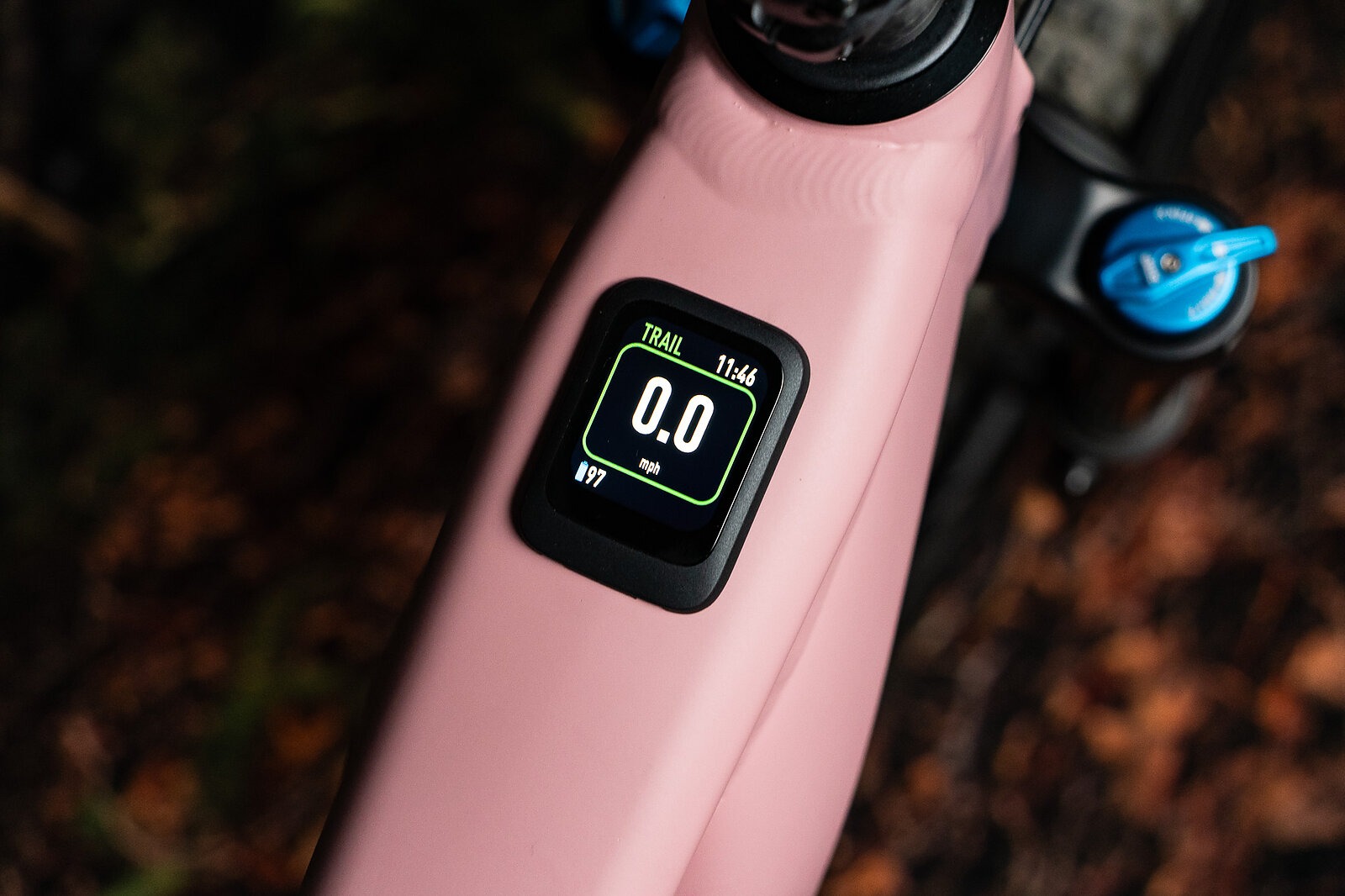
The Class 3 cat is out of the bag
One of the big headlines when the carbon Levo 4 launched was that Specialized has included a setting that allows riders to swap the max assisted speed to 28 mph from the stock 20. That effectively turns the Levo 4 into a Class 3 e-bike, instead of the Class 1 rating that most electric mountain bikes ostensibly fit into. Some folks are hailing this as a big, bad stepping stone in e-bike evolution, a metaphorical cat that’s being let out of the bag to wreak havoc. I’d beg to differ.
The cat exited the bag well over a decade ago when the powers that be decided that we were going to treat pedal-assisted vehicles as a subset of mountain bikes, not of motorcycles. This is just the next logical step in that arc. There is nothing uniquely new or bad here that’s going to “compromise the integrity of the sport” any more than it’s already been compromised. This bike has a motor, just like all the other bikes that have motors that the industry has decided should get to play with the pure pedal bikes.
Before I lived in Bellingham, my local trail advocacy paradigm was very simple. All of our riding happened on National Forest land. In the National Forest we had non-motorized, and motorized trails. Mountain bikers could go on both the non-motorized and motorized trails. E-bikes were only allowed on motorized trails, because they have motors in them. Simple rules, easily followed.
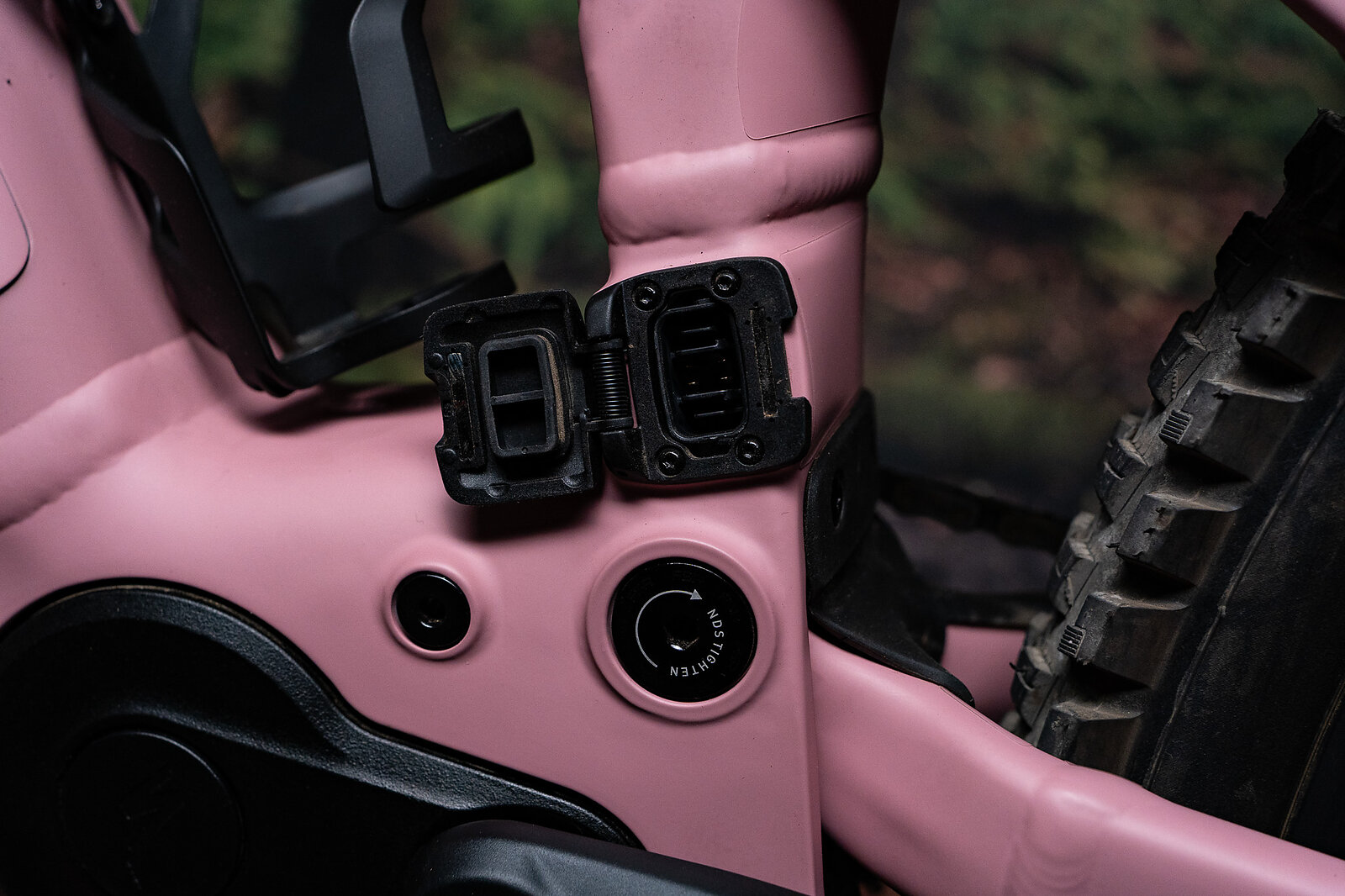
Refreshingly, the Levo 4 fits into that paradigm neatly. This thing is not trying to simulate the human-powered experience. It’s not delivering a little assist that makes you feel like the ideal you, the you that’s actually in shape. No. It’s a beefy, powerful hawg, and I mean that in the best way possible.
The Levo 4 eliminates the slippery slope by riding up it. This bike would be an absolute menace on a non-directional multi-use network. It would be hard not to terrorize pedestrians and riders going the opposite way on the same trails you’re riding. It’s not trying to sneak in as “basically a pedal bike, so please give me the same access.” Instead it’s legitimately fun to ride on moto trails that are too steep and beat to be enjoyable to climb under human power. It’s fast and powerful enough to make zipping up to build trail much easier. It bridges the gap for all of us who aren’t quite strong enough, or don’t quite have the access to ride moto, but want to go faster uphill than our frail mortal shells allow.
The Levo 4 doesn’t let any cats out of any bags. Instead, it’s just a more powerful, more feral version of a cat that’s been out of the bag for many years.
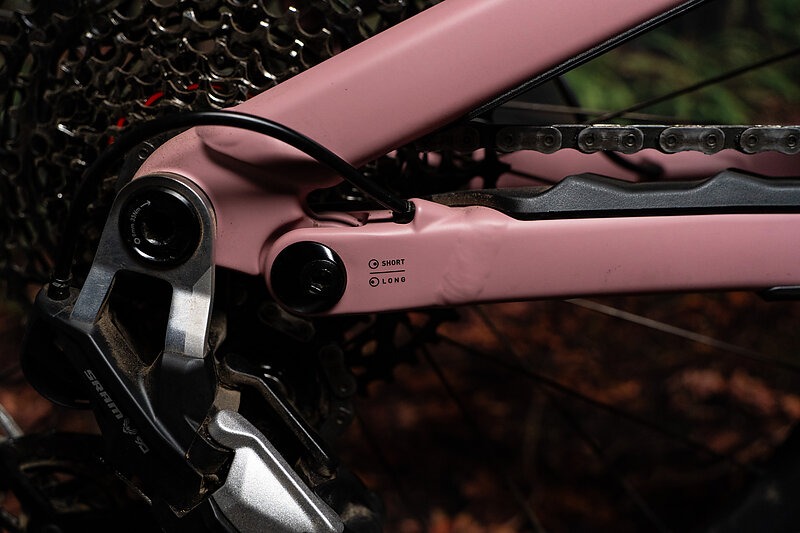
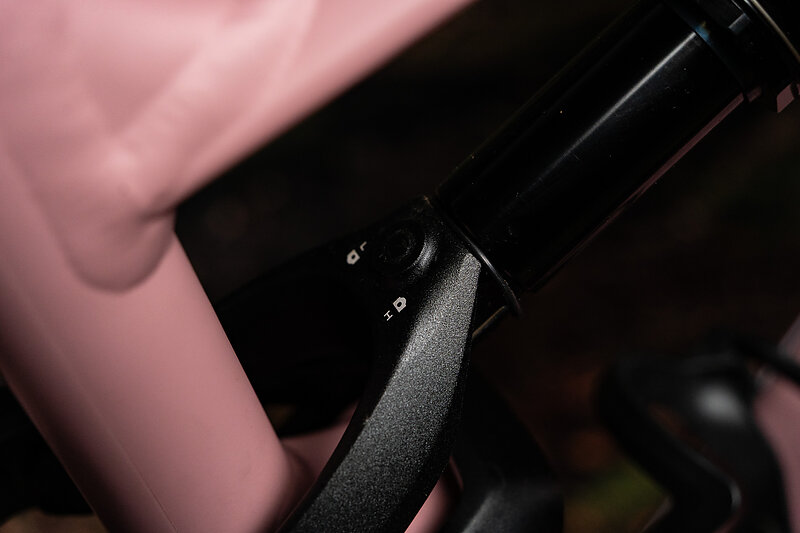
Levo 4 Alloy Geometry
The Levo 4 Alloy shares the same geo as the carbon version, and is similarly adjustable. You’ve got swappable headset cups that allow for a degree of headtube angle adjustment in either direction. There’s also a flip chip at the shock mount that raises or lowers the bottom bracket by 6 millimeters, and there’s another on the chainstay that allows for 8 millimeters of rear center adjustment.
By default the bike ships in the middle headset, low flip chip, and short chainstay configuration, and that’s what I’ve kept it in so far. In the following months I’ll have a followup piece that dives into the geometry adjustments, some different shock options, and longer-term durability of the Levo 4 Alloy.
In its stock set up the S4 I reviewed has a 480 mm reach, 64.4° head tube angle, 77° seat tube angle, 350 millimeter high bb, 435 millimeter chainstay, and 638 millimeter stack. It’s very similar to the Stumpjumper 15’s geometry, with some small tweaks to better suit the motorized experience. That geometry is a great neutral starting place, with the option to tweak and dial it in with the integrated adjustments.
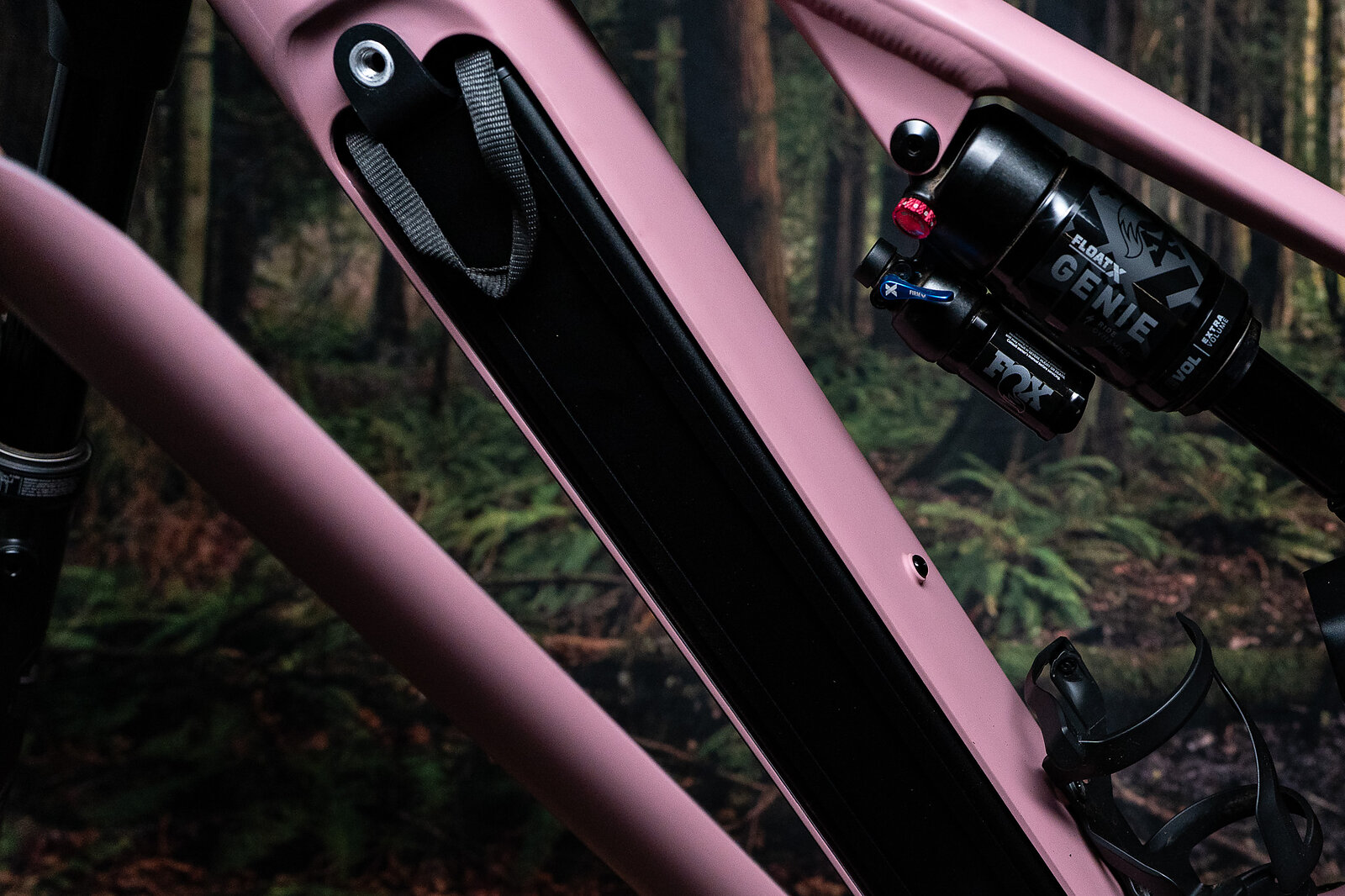
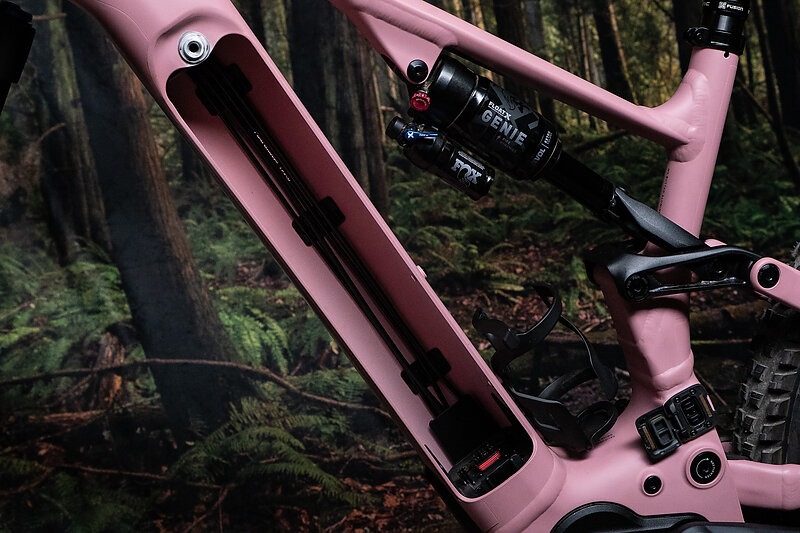
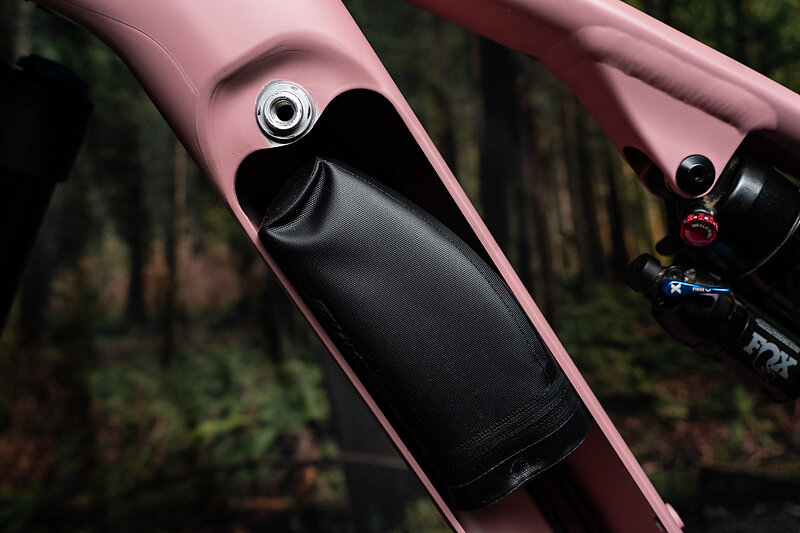
Levo 4 Alloy Frame Details
Unsurprisingly, the Levo 4 Alloy’s frame is very similar to the carbon one. It’s got the same side-mounted battery door that only requires one bolt to pull and swap the battery. Above the battery is a small SWAT bag, perfect for a tow strap or spare tube. Much of the cable and hose routing is easily accessible behind the battery.
Unsurprisingly the Levo 4 has a 34.9 millimeter seat tube, uses the UDH interface, and has all the usual touches you’d expect from a Specialized.
Although it’s not really a frame detail, Specialized has put a lot of effort into the companion app for the Levo, which allows you to fine tune its power delivery, integrate the bike’s onboard computer with all your fitness apps, learn to optimize your cadence for the motor’s power delivery, and even track and shut down the bike’s power remotely in case of theft. Lots of tech for the nerds, but thankfully you don’t have to use the app if you just want to ride your bike.
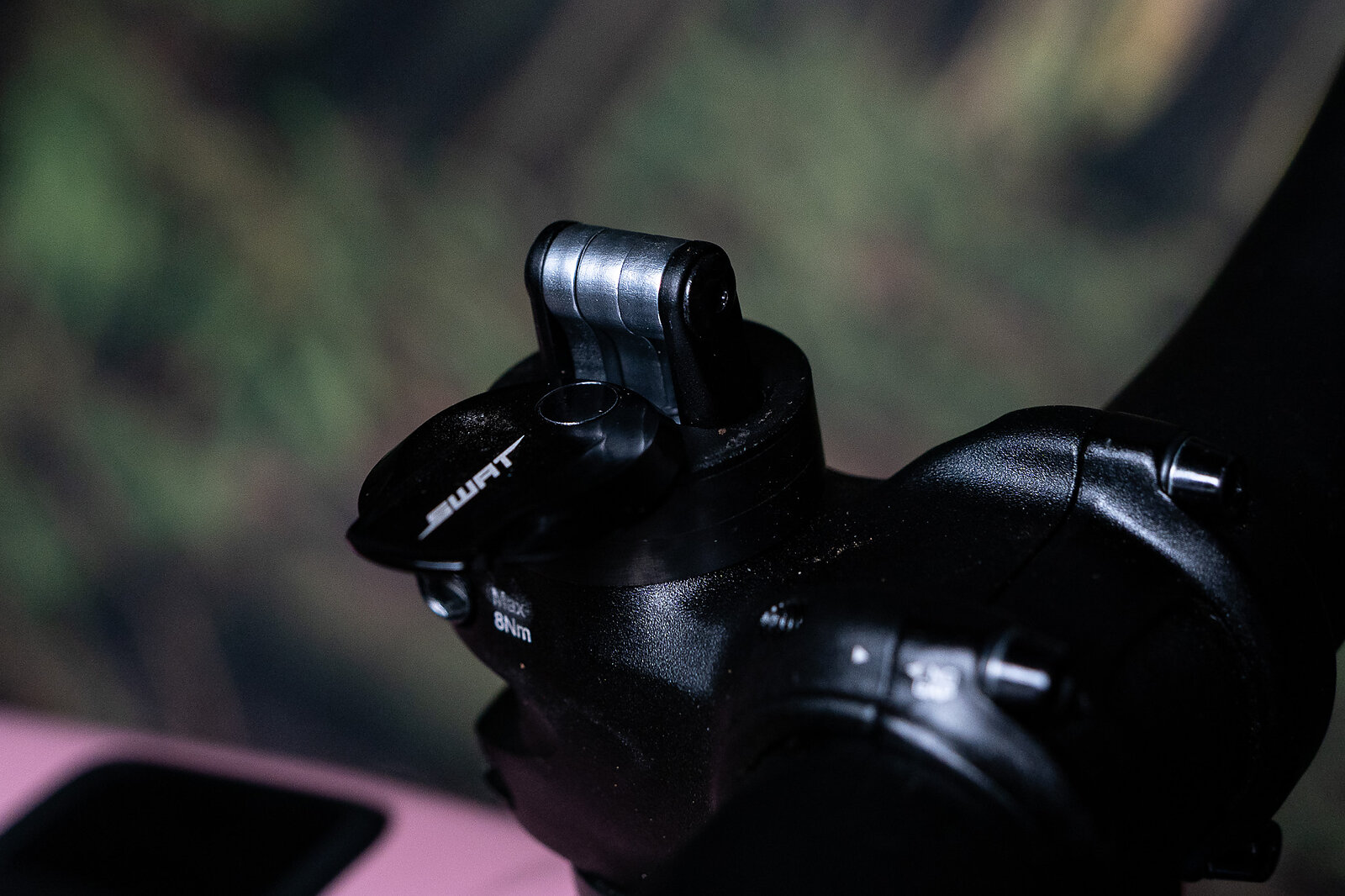
Levo 4 Comp Build
This is the nicer of the two alloy Levo 4’s and it’s a pretty sweet build with a couple of small exceptions. First the good:
SRAM’s 90 Eagle 90 Transmission is an excellent spec on a bike like this. Specialized’s new Butcher is noticeably grippier and more aggressive than the old version, and a great match for both ends of this bike. Specialized’s house-brand alloy bars were a surprising highlight. They’re listed at 30 millimeters of rise, but look and feel like they have more. It’s great to have high-ish bars on a bike like this, and I appreciate the SWAT tool in the stem as well.
The Performance level 160 millimeter Fox 36 up front is totally adequate, although I’d love to ride this bike with a 180 millimeter 38 - I think it will be fun to smash on. Out back, the Genie Float X piggyback shock still delivers absurd grip off the top, with a smooth catch deep in the travel.
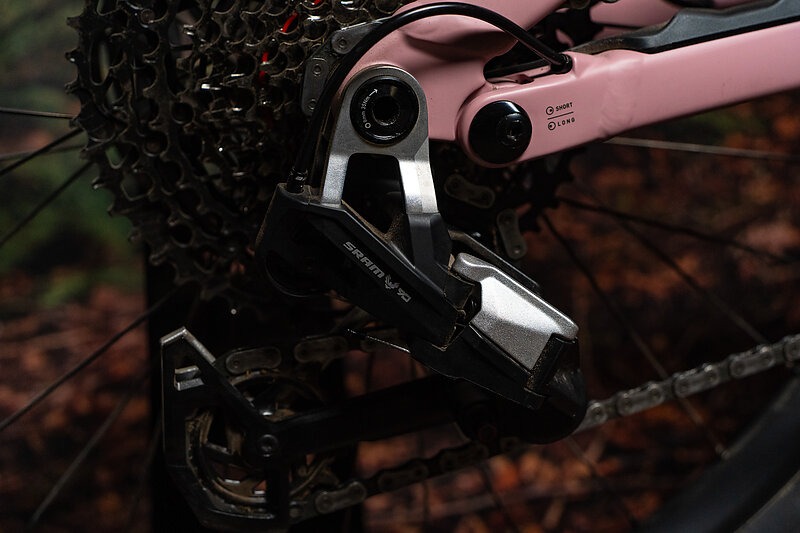
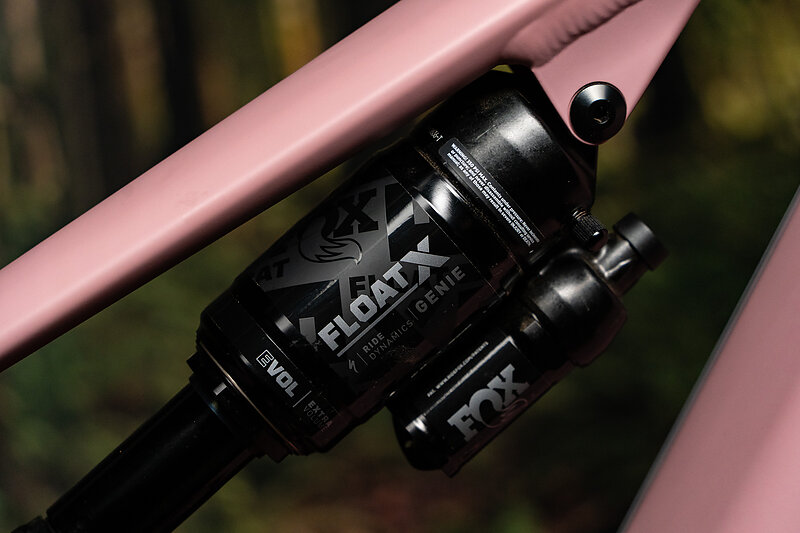
I’ve had two quibbles with the spec so far. First: the stock dropper only has 170 millimeters of travel on the S4. Specialized knows better, and specs longer droppers on the Stumpjumper. I swapped in a 240 millimeter OneUp V3 dropper and have appreciated the extra clearance. Second, I love SRAM’s Maven Bronze, but they’re coupled to the thinner Centerline rotors, not the beefy HS2s. With nearly 55 lbs of bike, and 200 lbs of man making poor choices, I got these very hot, very fast, and the rear brake started pulling to the bar if I didn’t pump it up.
I swapped in thicker rotors, and gave the rear brake a bleed, and so far it’s been great, but I’d highly recommend upgrading the stock Centerline rotors to HS2s if you plan on riding sustained steeps on the Levo 4.
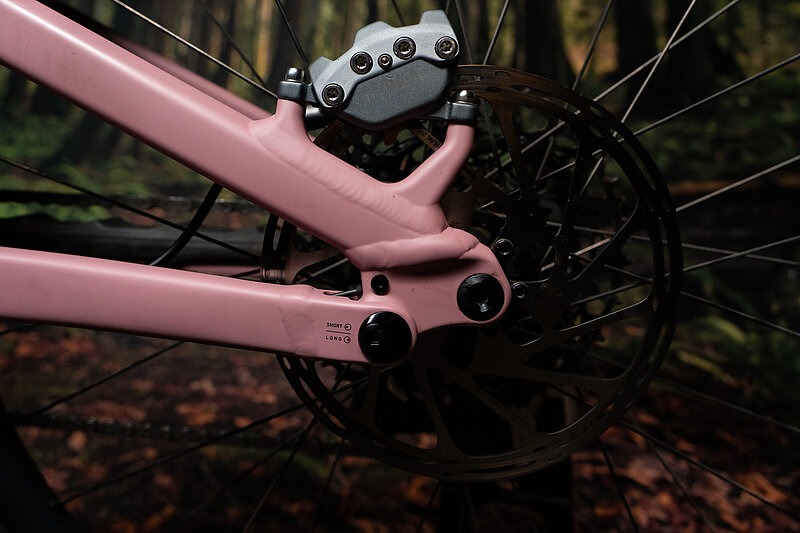
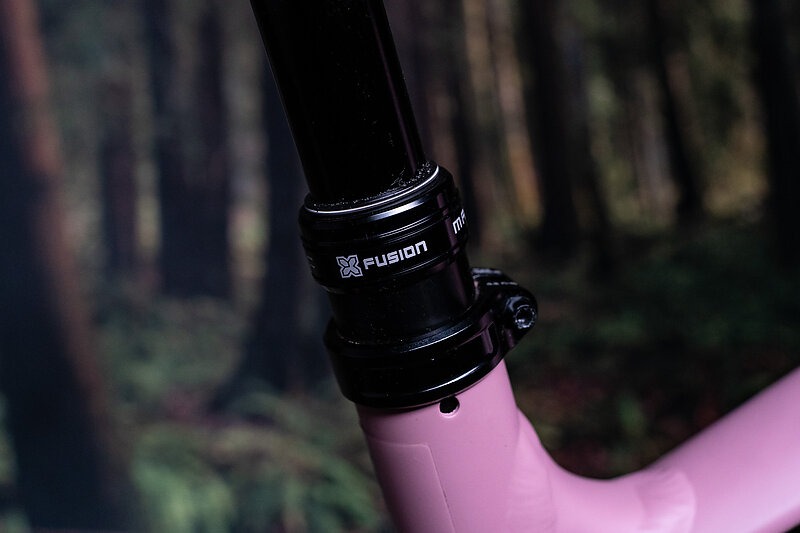
Riding the Levo 4 Alloy
Back to the cat exiting the bag analogy up top: it feels like every brand has a hot new mid-powered kinda-lightweight e-bike that they want me to review right now. And that’s fine. Sorta. But I don’t want a gentle push on the uphill that honestly, reminds me that I could be going this fast without a motor if I was on an XC bike and trying hard. If I’m gonna haul around a motor and a battery, I want it to do things dammit! And this bike does things. Fast.
The Levo 4 is so powerful and torquey, it’s really fun to take on weird challenge climbs and rutted moto trails. And if you do dab on the climb, and lose momentum, it has so much torque that you can often start back up on improbably steep slopes. This motor makes riding moto trails fun. Maybe not as fun as they would be on a dirt bike, but way more fun than they would be on a pedal bike. I found myself carrying enough speed that my animal brain was switching back into dirt bike mode, and I caught myself reaching for the front brake, thinking I could pop the clutch, or twisting my grip, trying to throttle out of corners.
I rode the Levo 4 alloy with a friend who has the Levo 3 alloy, in a S5 and we swapped back and forth a bit. I immediately noticed the extra power and torque on the 4. With both of us in “Boost” mode, I quickly dropped him on non-technical climbs, and I had to throttle back to “Trail” or “Adaptive” mode to hang out with him. The 4 does eat its battery faster than the 3 though, so it’s important to practice moderation with your boosting.
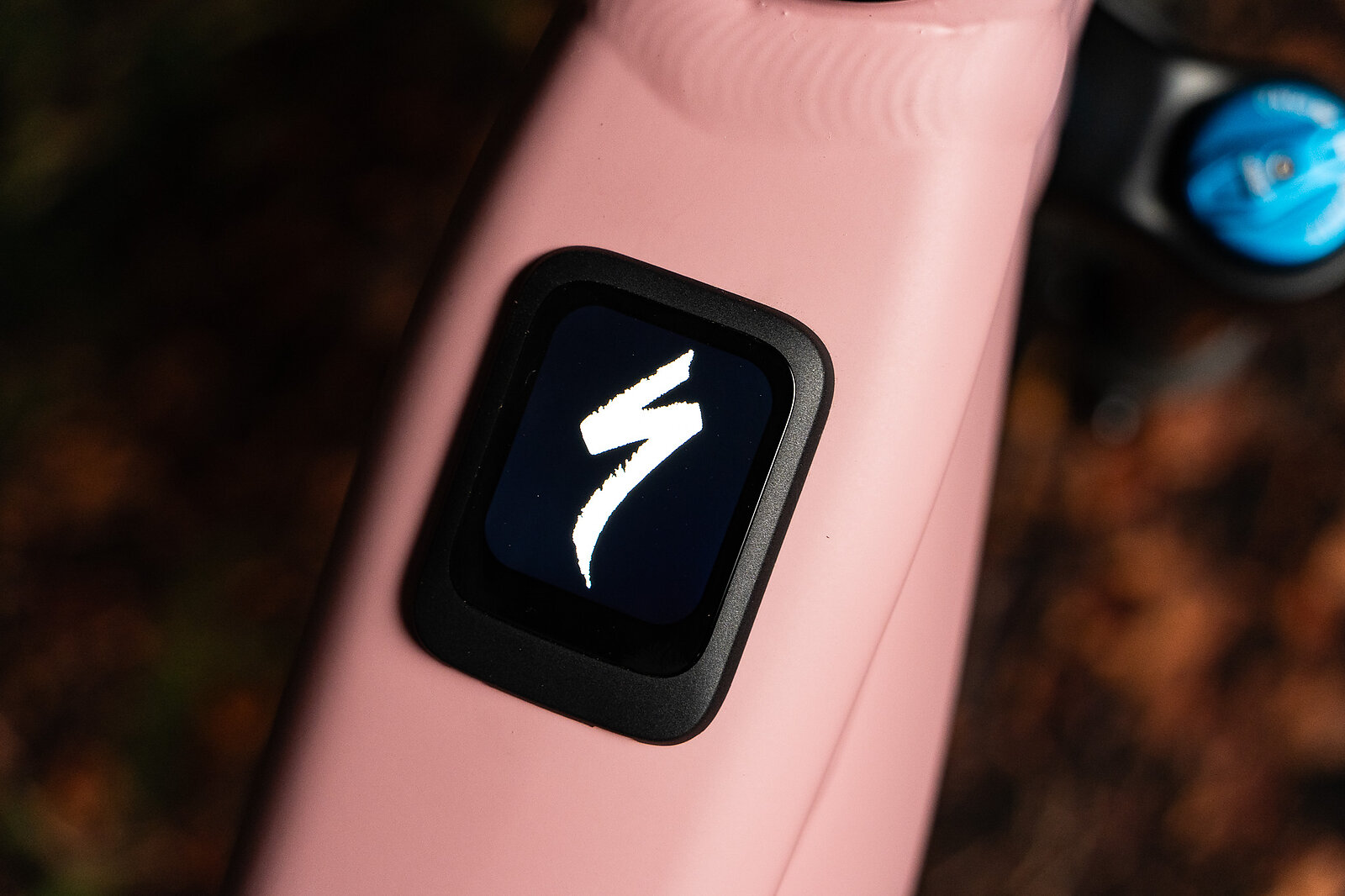
I have spent a bunch of time descending on the Levo 4’s sibling, the alloy Stumpjumper 15. That’s my primary personal bike. The Levo 4 is very intuitive and familiar, but quite a bit heavier. I immediately got it up to speed on the steep, techy trails that I love the most, but it’s taken a little longer to trust it on smooth flow trails, and in the air.
The Genie shock delivers a delightful combination of traction and support out of the box that I think will appeal to a lot of folks. However, on my personal Stumpjumper I’ve really appreciated the extra level of damping and tuning that I’ve been able to get with the Cane Creek Tigon. So I’ll be trying the Levo 4 with the Tigon, as well as with a longer fork and Fox Float X2, and will report back on my findings.
As it stands though, the Levo 4 smashes harder than its numbers would suggest, without being untowardly unruly in slower, less technical terrain. Its stock geo and suspension platform strikes a nice balance that doesn’t feel stupid anywhere, but also doesn’t feel fully optimized in any one type of terrain. So I’m excited to dive in, experiment, and plumb the limits of the Levo 4 Alloy.
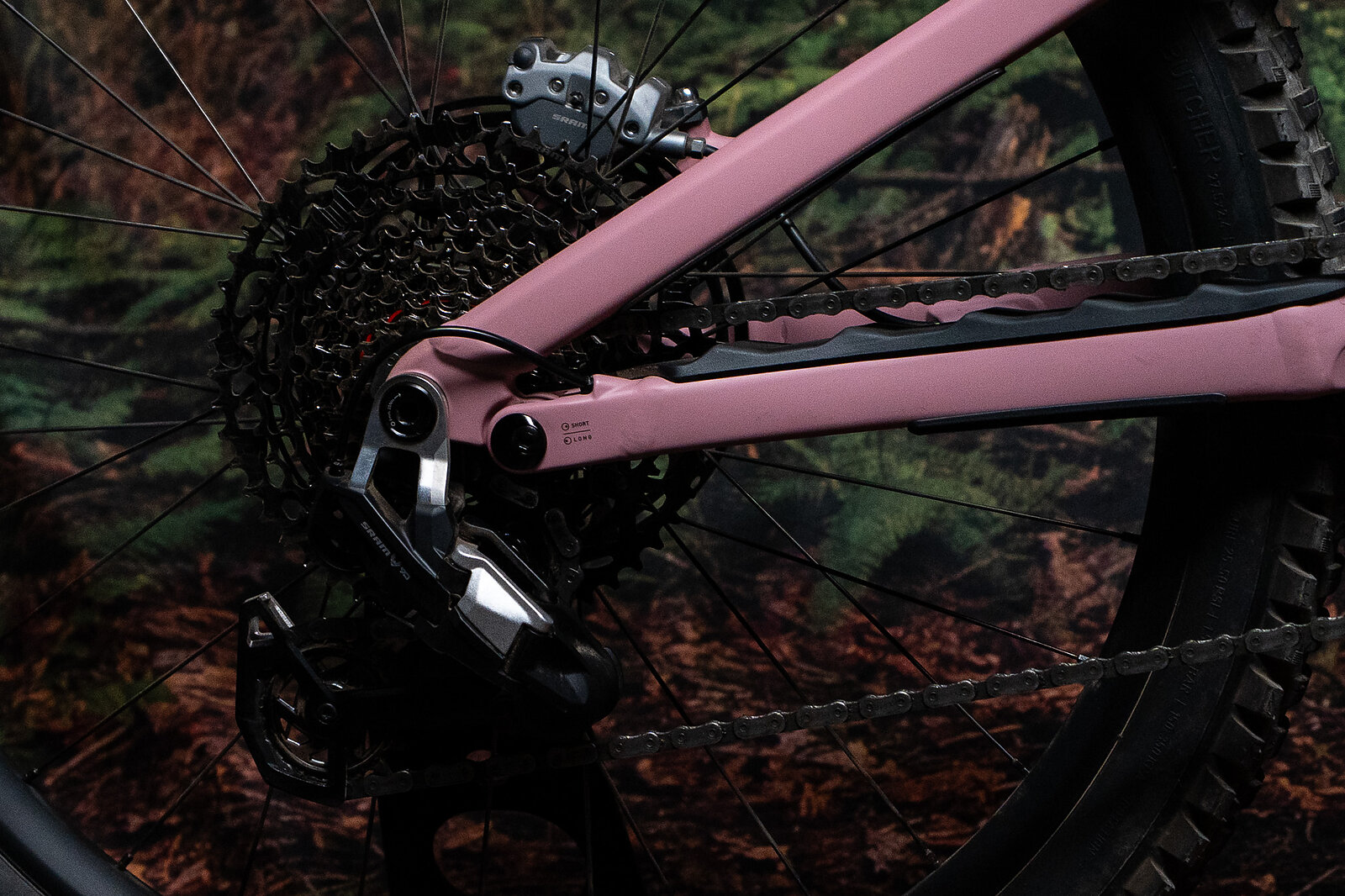
For Now
One of my favorite things about riding and reviewing the current crop of Specialized bikes is that they all seem to try to appeal to two different customer sets. They ship in a “neutral” configuration that’s generally plug and play for most riders on most trails. If you buy the bike and never mess with any of the settings, you’ll have a good time. That’s certainly the case with the Levo 4 Alloy.
But, they also come with so many adjustments baked in that you can fiddle to your heart’s content, optimizing and tweaking. So far, I’ve played along as the first group on the Levo 4, and out of the box, it’s capable, and easy-to-love. Now it’s time to get into the weeds, make some mistakes, and figure out what all those flip chips do!
Learn more: Specialized
